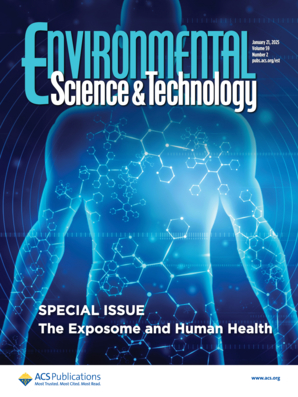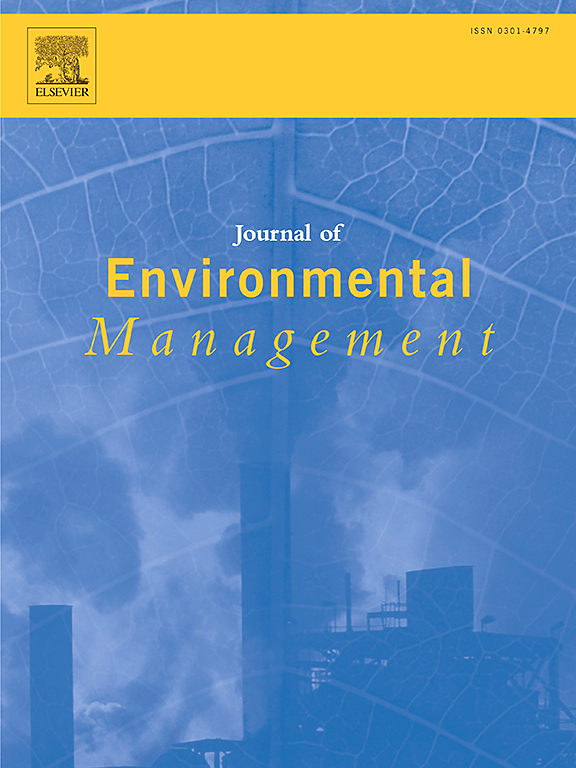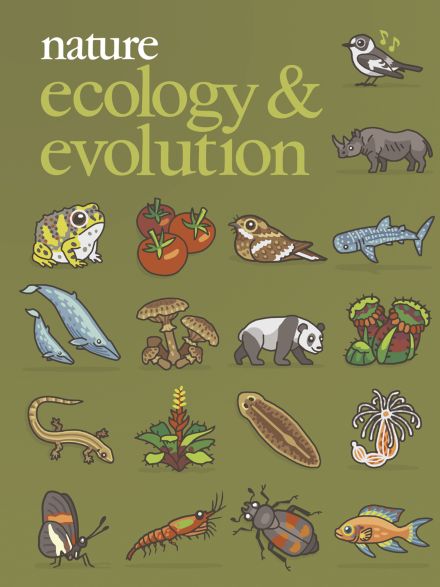Please find all scientific publications of IGB under > scientific publications
For more detailed information please refer to our > library catalogue
11 - 20 of 195 items
- Programme area:1) Biodiversity in a Changing World
August 2025
Frontiers in Microbiology. - 16(2025), Art. 1615096
Multigene phylogeny, morphology, and pathogenicity uncover two novel Globisporangium species (Oomycota) from freshwater habitats in northwestern Iran
Reza Ahadi; Alireza Alizadeh; Ali Chenari Bouket; Hossein Masigol; Hans-Peter Grossart

August 2025
Environmental Science & Technology. - 59(2025)33, 17811–17821
Revisiting Cyanobacteria-Temperature Dynamics: Intraspecific Competition and Trait Diversity as Keys to Predicting Harmful Algal Blooms under Climate Change
Yanxue Zhang; Huaming Wu; Xingqiang Wu; Hans-Peter Grossart; Andreas Lorke
June 2025
Ecology letters. - 28(2025)6, Art. e70164
Dynamic Environmental Niches of Marine Invasive Species Over 200 Years
Chunlong Liu; Zeli Ruan; Jiayuan Xie; Jonathan M. Jeschke; Lise Comte; Julian D. Olden; Yunwei Dong; Jiansong Chu; Bin Kang; Brian Leung
June 2025
Water Research. - 285(2025), Art. 124037
Salinity regulates nutrient cycling via top-down and bottom-up forces in artificial cut-off tidal channels: insights from multitrophic microbiota
Xin Ma; Yi Li; Lihua Niu; Hans-Peter Grossart; Jiahui Shang; Jinhai Zheng; Jianming Wu
June 2025
Proceedings of the Royal Society B: Biological Sciences. - 292(2025), 20243072
The microbiology of Uganda’s large freshwater lakes experiencing anthropogenic and climatic perturbations: why it matters—a review
Daniel Abiriga; Robinson Odong; Grace Kizito Bakyayita; Ronald Semyalo; William Okello; Hans-Peter Grossart
May 2025
Scientific Data. - 12(2025), Art. 832
Global Impacts Dataset of Invasive Alien Species (GIDIAS)
Sven Bacher; Ellen Ryan-Colton; Mario Coiro; Phillip Cassey; Bella S. Galil; Martin A. Nuñez; Michael Ansong; Katharina Dehnen-Schmutz; Georgi Fayvush; Romina D. Fernandez; Ankila J. Hiremath; Makihiko Ikegami; Angeliki F. Martinou; Shana M. McDermott; Cristina Preda; Montserrat Vilà; Olaf L. F. Weyl; Neelavar Ananthram Aravind; Ioanna Angelidou; Katerina Athanasiou; Vidyadhar Atkore; Jacob N. Barney; Tim M. Blackburn; Eckehard G. Brockerhoff; Clinton Carbutt; Luca Carisio; Pilar Castro-Díez; Vanessa Céspedes; Aikaterini Christopoulou; Diego F. Cisneros-Heredia; Meghan Cooling; Maarten de Groot; Jakovos Demetriou; James W. E. Dickey; Virginia G. Duboscq-Carra; Regan Early; Thomas E. Evans; Paola T. Flores-Males; Belinda Gallardo; Monica Gruber; Cang Hui; Jonathan M. Jeschke; Natalia Z. Joelson; Mohd Asgar Khan; Sabrina Kumschick; Lori Lach; Katharina Lapin; Simone Lioy; Chunlong Liu; Zoe J. MacMullen; Manuela A. Mazzitelli; John Measey; Agata A. Mrugała-Koese; Camille L. Musseau; Helen F. Nahrung; Alessia Pepori; Luis R. Pertierra; Elizabeth F. Pienaar; Petr Pyšek; Gonzalo Rivas Torres; Henry A. Rojas Martinez; Julissa Rojas-Sandoval; Ned L. Ryan-Schofield; Rocío M. Sánchez; Alberto Santini; Davide Santoro; Riccardo Scalera; Lisanna Schmidt; Tinyiko Cavin Shivambu; Sima Sohrabi; Elena Tricarico; Alejandro Trillo; Pieter van’t Hof; Lara Volery; Tsungai A. Zengeya

May 2025
Journal of Environmental Management. - 386(2025), Art. 125663
Towards transformative change for biodiversity: What can we learn from case studies in Germany?
Vera Schreiner; Marion Mehring; Janina Kleemann; Jennifer Hauck; Stefan Knauß; Christian Poßer; Christian Schleyer; Thomas Potthast; Karsten Grunewald; Christine Fürst; Jennifer Müller; Christian Albert; Monika Egerer; Dagmar Haase; Sonja C. Jähnig; Josef Kaiser; Tanja GM. Sanders; Pia Sommer; Thilo Wellmann; Peter Keil; Heidi Wittmer
The authors analysed 22 case studies of biodiversity-enhancing societal processes and projects in Germany to identify barriers and success factors, as well as features that support transformative change towards sustainability and the mainstreaming of biodiversity. They identified 16 features that support transformative change for biodiversity, many relevant beyond Germany.

May 2025
Nature Ecology & Evolution. - 9(2025), 880–882
Learn from Chinese examples to save endangered sturgeons from hydropower dams
Hong Cao; Liang Zhang; Jörn Gesser; Leonardo Congiu; Xin Gao; Boyd Kynard; Qiwei Wei; Ping Xie
May 2025
Research ideas and outcomes. - 11(2025), Art. e152859
Ecology for a social revolution: Re-defining the role of ecological and environmental science professionals and their responsibilities towards society
Florencia A Yannelli ; Kristiina Visakorpi ; Anni Arponen ; Carlos Alberto Arnillas ; Javiera Beatriz Chinga Chamorro ; Mariana C. Chiuffo ; Sharon K. Collinge ; Roger Cousens ; Kadambari Devarajan ; Ken Ehrlich ; marilyn grell-brisk ; Rebecca W. Kariuki ; Heather M. Kharouba ; Andrea Monica D. Ortiz ; Ana Carolina Prado-Valladares ; Helen Regan ; Florian Schnabel ; Bruno E. Soares ; Gisela C. Stotz ; Michael Williams ; Marc W. Cadotte
May 2025
Water Research. - 283(2025), Art. 123764
Phytoplankton abundance and methane emissions are minimally impacted by environmentally-relevant glyphosate concentrations in small-scale outdoor mesocosms
Christopher F. Frazier; Ted D. Harris; Tonya DelSontro; Hans-Peter Grossart; Belinda S.M. Sturm; Jalynn M. Murry; Andrew Ising





